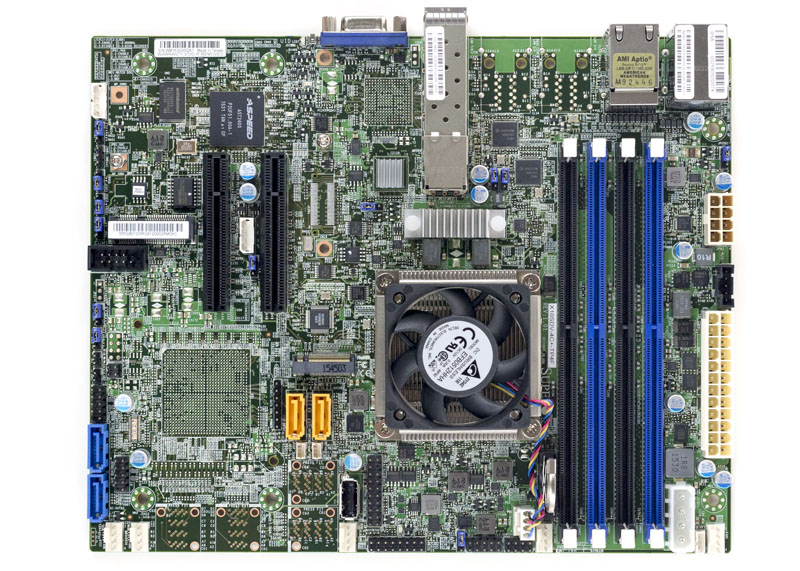The Supermicro X10SDV-4C+-TP4F is a is a low power platform that can serve as a great foundation for storage and networking appliances. It has an onboard Intel Xeon D-1518 which is a four core, eight thread Broadwell-DE based SoC which we previously benchmarked in-depth. The X10SDV-4C+-TP4F utilizes Supermicro’s FlexATX form factor which affords greater expansion possibilities and SFP+ networking than Supermicro’s mITX form factor.
Test Configuration
We used a similar configuration to our other Xeon D reviews.
- CPU: Intel Xeon D-1518 (embedded)
- Motherboard: Supermicro X10SDV-4C+-TP4F
- Memory: 128GB – 2x Samsung 32GB DDR4 2133MHz ECC RDIMMs and 4x 16GB DDR4 2133MHz configurations
- SSD: 4x Intel DC S3700 400GB, 1x Samsung XP941 512GB, 1x Intel DC P3600 400GB (add-in HHHL card)
- Operating Systems: Ubuntu 14.04.4 LTS, Ubuntu 16.04 LTS, CentOS 7
At around $470 new, our configuration is a bit higher-end than many will pair with this motherboard. For those building a networking node, the add-in card will likely be focused on an add-on NIC. For Ceph nodes one will likely use a mSATA boot drive, four SATA hard drives and a m.2 SSD for caching.
Supermicro X10SDV-4C+-TP4F
The Supermicro Supermicro X10SDV-4C+-TP4F is a FlexATX motherboard. This size allows the motherboard to fit into short depth chassis and still allow room for cooling fans.
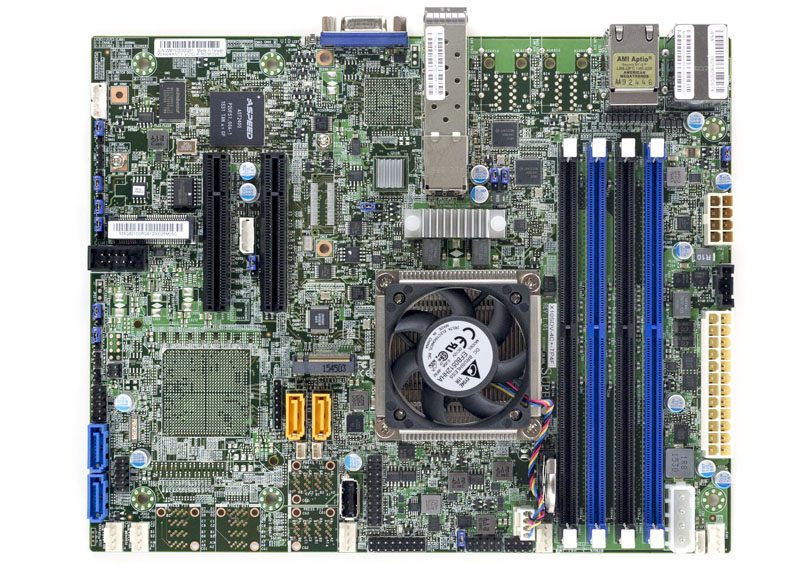
The onboard Intel Xeon D-1518 has 4 cores, and 8 threads thanks to Hyper-Threading. TDP is spec’d at 35W.
Like Supermicro’s other X10SDV FlexATX motherboards, the X10SDV-4C+-TP4F motherboard follows front to back airflow. The “+” in the model name denotes that the processor is actively cooled.
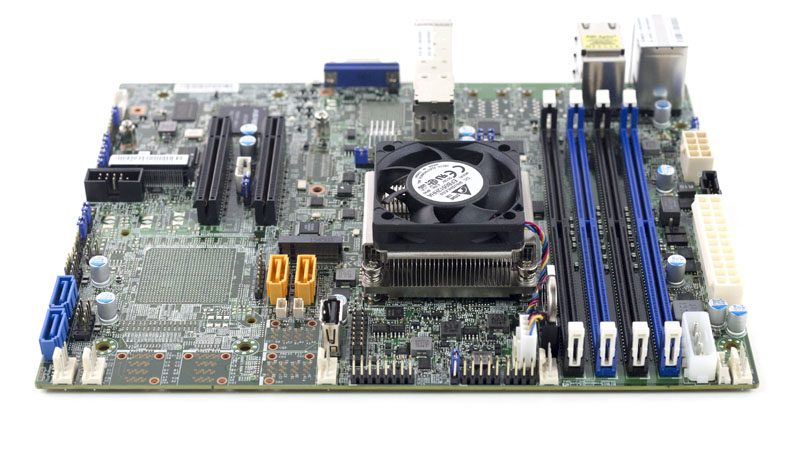
You will need chassis fans to cool the CPU and other components. With six 4-pin PWM headers (one occupied by the CPU fan) there is ample room to add cooling fans as necessary.
In terms of expansion, there is a m.2 PCIe SSD slot that sits above the two PCIe 3.0 x8 slots. When selecting a 1U rackmount chassis, the two PCIe slots allow for flexibility regarding where the 1U riser is used. This makes the FlexATX’s PCIe design compatible with more rackmount chassis than the mITX design. We have used Supermicro SC505 and SC504 chassis with success and even older chassis like the Supermicro SC113.
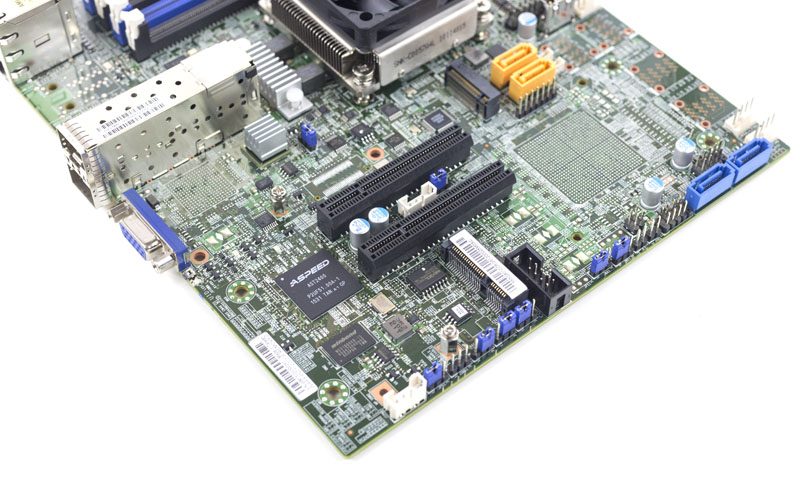
One can also see the mPCIe/ mSATA slot below the PCIe slots. The mPCIe/ mSATA slot is useful to install a boot device into the platform or a low profile SSD.
There are four SATA ports onboard. The two yellow/ orange ports support SATA DOM power and there is also a SATA DOM power connector just next to each port. We use SATA DOMs on the Supermicro X10SDV motherboards we use to host STH. The Supermicro SATA DOMs we use do not require the additional power cable and are instead powered by the orange ports. In storage configurations these four ports will often be used for hard drives with the m.2 and mPCIe/ mSATA ports being used for SSDs.
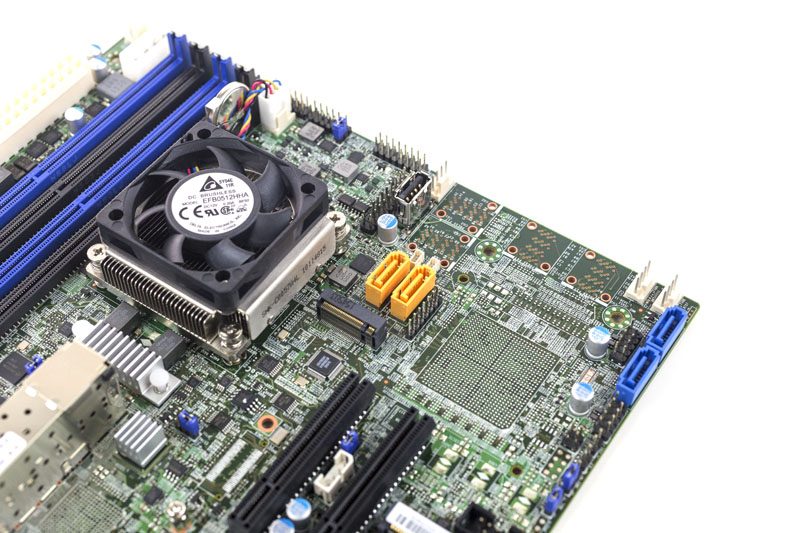
Next to the SATA DOM ports there is an internal USB Type-A header that can also be used to host a boot device. For example, with VMware and Nutanix builds, a USB key is often used as boot media or as a licensing mechanism.
The rear I/O includes four primary networking ports. Dual Intel i210-at Ethernet controllers provide 1GbE connectivity and are out of the box compatible with just about every major operating system. The other network ports are two SFP+ 10GbE ports that utilize the Xeon D onboard 10Gb MAC. With the latest OS versions (e.g. Ubuntu 16.04), this works great because the Broadwell-DE Intel X552/ X557 drivers are included. If you are using older OS versions you will likely need to load the latest Intel ixgbe drivers.
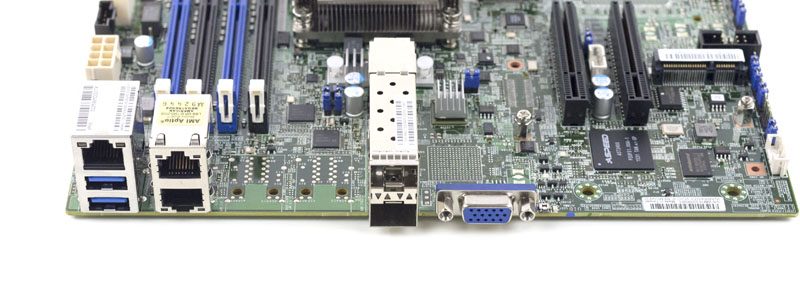
Rounding out the rear I/O there is an out of band management Ethernet port. One can also see a VGA output and dual USB 3.0 ports for local KVM access. Now having tested/ purchased a total of over 20 of these motherboards, we have only needed to plug in a VGA monitor to one board. That was just to triple check we were going to be upgrading the correct unit in production. Most management will be done via Supermicro’s remote management feature.
Thermal Imaging and Power Consumption
To capture these images we utilize our FLIR Ex series professional thermal imaging camera and turn on FLIR’s MSX enhancements so we can see components outlined clearly. We put the system under 100% CPU load for a period of 24 hours to let “heat soak” set in prior to taking the images.
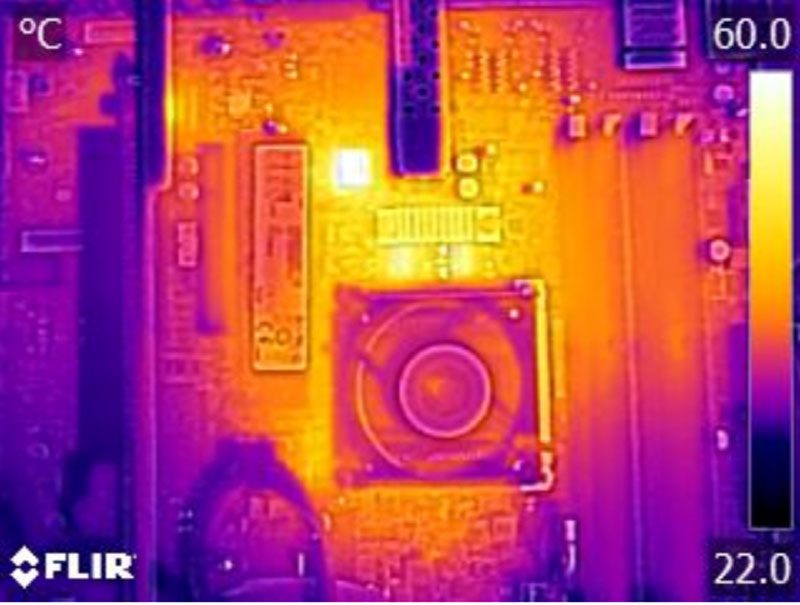
Overall, the thermal performance of the setup was good. The power deliver components on our unit did get hot but were within spec and we did not notice any stability issues with the platform. We did not have the m.2 SSD stressed during this test. If you do have an m.2 PCIe SSD installed, you will want to use the 4-pin PWM fan headers to provide chassis cooling to that side of the motherboard.
We used our Extech TrueRMS Power Analyzer 380803 to take measurements at different points of the board’s use.
- BMC only power off – 4.9w
- Ubuntu 14.04 LTS installation screen – 22.9w
- UnixBench 5.1.3 single thread max – 32.4w
- Max observed – 58.5w
These are excellent results and this is certainly a testament to the platform. Loaded with SSDs for an all-flash Ceph node or with a USB key/ SATA DOM for a network appliance that is a lot of platform in a very low power envelope.
Remote Management
Supermicro’s IPMI and KVM-over-IP as described a few times on this site, allows for a lot of deployment flexibility. Things such as fan speeds, chassis intrusion sensors, thermal sensors, and etc. can be monitored remotely. Alerts can be setup to notify the admins of issues. Beyond this, the functionality also allows for remote power control. One can do remote power up, power down, and reset of the server in the event that it becomes unresponsive.
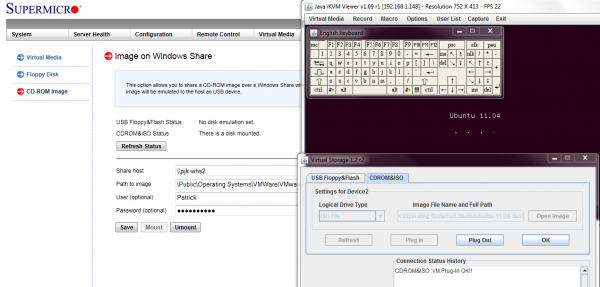
Another important feature is the ability to remotely mount CD images and floppy images to the machine over the dedicated management Ethernet controller. This keeps maintenance traffic off of the primary Intel NICs. At the same time it removes the need for an optical disk to be connected to the Supermicro motherboard.
The latest revision of Supermicro’s BIOS has a great feature: the BMC IP address shows up on the post screen! This is a super feature because if one has a KVM cart hooked up to the system, it gives an indicator of which machine one is connected to during post.

Supermicro does include KVM-over-IP functionality with the motherboard. We have been testing servers from HP, Dell, Lenovo and Intel that all required an additional add-in key to get this functionality. It is an absolute time and money saver in the datacenter and other vendors should follow Supermicro’s lead in this space.
Conclusion
For those looking to build networking appliances or lower-end storage appliances, the Supermicro X10SDV-4C+-TP4F is worth consideration. The Intel Xeon D-1518 SoC provides a good balance of low power operation yet with solid performance. Integrated boot drive headers (e.g. USB Type-A, SATA DOM and mSATA) mean that there is ample flexibility with the platform to either remain compact or provide mass storage. The ability to run up to 128GB DDR4-2133 means that running lightweight virtualized workloads runs well on the platform.
Try the Supermicro X10SDV-4C+-TP4F yourself
Want to try out the Supermicro X10SDV-4C+-TP4F platform? It will be available for testing starting the week of 11 July after this review on DemoEval. Click the logo to try this machine or others like it:


